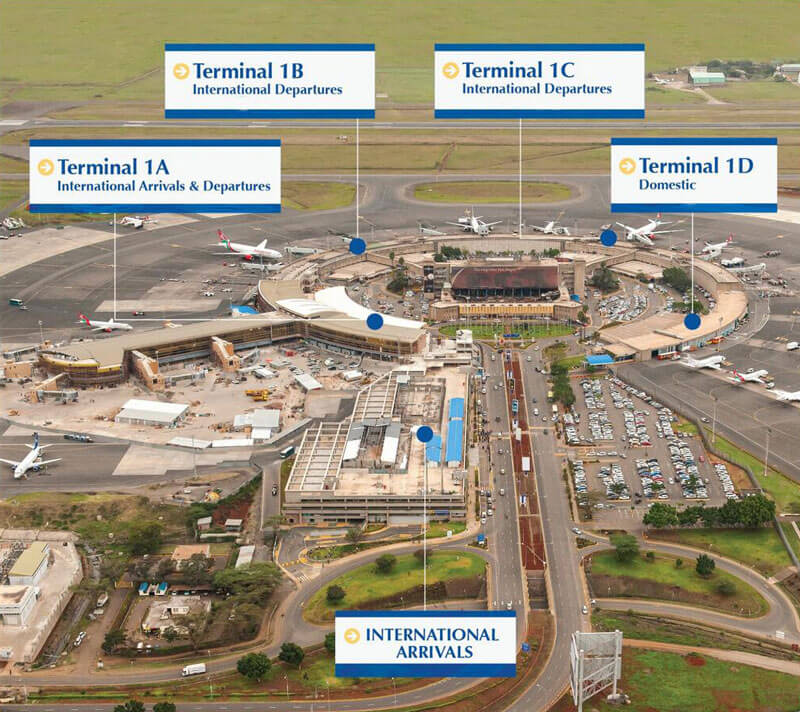IATA sees Kenya’s air transport sector growing to USD 11 billion by 2037

Kenya’s air transport sector is projected to grow more than two-fold over the next two decades if current markets trends hold with its contribution to GDP expected to reach USD 11.3 billion by 2037.
The projections by the International Air Transport Association IATA, are based on the sector’s performance which saw it contribute USD 3.2 billion and 4.6 percent of Kenya’s GDP in 2017. The figures are contained in IATA’s Value of Aviation Report for Kenya which forecasts that the sector will grow 249 percent over the period under reference if current trends are maintained. Its contribution to GDP will reach USD11.3 billion annually, supporting an estimated 859,000 jobs by 2037.
IATA launched the report during its Regional Aviation Forum for Africa that was hosted by Kenya Airways on September 17.
“In total, 4.6 percent of the country’s GDP is supported by inputs to the air transport sector and foreign tourists arriving by air,” IATA says in the report which among others uses the number of the jobs and spending generated by airlines and their supply chain as well as trade and tourism flows to arrive at an aggregate value of the sector’s contribution to the economy. The figure also includes the investment resulting from users of all airlines serving a particular country as well as the city pair connections that make these flows possible.
According to the report, Kenya received 4.8 million foreign passengers in 2017. Gross expenditure by the sector reached USD3.2 billion while 410,000 jobs were attributable to the sector. Of this, USD 0.9 billion was spent directly by the passengers and supported 15,000 jobs. Another USD0.6 billion was spent on the industry’s supply chain that employed 96,000 people. Gross expenditure by tourists who arrived by air stood at USD1.6 billion with 257,000 jobs in the hospitality sector dependent on it.
“On top of this, the sector is estimated to support a further 43,000 jobs through the wages it pays its employees, some or all of which are subsequently spent on consumer goods and services,” the report says.
It is projected that twenty-year growth if the current momentum holds would generate an additional 11.8 million passenger trips per year culminating in 16.6 million arrivals by 2037. By that time, their expenditure would reach USD11.3 billion and support 859,000 jobs. Under a more optimistic scenario, 18 million foreign passengers would make inward trips to Kenya annually and spend USD12.3 billion generating an estimated 950,000 jobs. But even a dip below current conditions would not slow the sectors expansion and air transport would still bring 14 million passengers and USD 9.5 billion in earnings with 719,000 jobs dependent on the sector.
Other highlights in the report show that Africa is the biggest source of air passengers to Kenya. A total of 3.1 million passengers or 70 percent of total visitors to Kenya in 2017 came from Africa. Europe came next with 585,000 passengers followed by Asia-Pacific 284,000, the Middle East, 233,000 and the United States 210,000.
In terms of frequency and seat count, the East African destinations of Dar es Salaam and Entebbe are Kenya are the busiest air routes between Kenya and any city pair. Dar es Salaam comes first followed by Entebbe, Dubai, Addis and South Africa. The Netherlands is the busiest cargo market for Kenya followed by the United Arab Emirates, Turkey, the United Kingdom and Saudi Arabia.
Over the past five years, the Middle East experienced the fastest growth in connectivity with Kenya with seats deployed the region increasing by 49 percent, followed by Africa at 23 percent. In contrast, capacity to Asia-Pacific and Europe shrank by 15 and 2 percent respectively over the same period.
“A key economic flow stimulated by good air transport connections is foreign direct investment, creating productive assets that will generate a long-term flow of GDP,” IATA says.
At the end of 2017, Kenya was connected to 67 destinations served by 32 airlines. Passenger and trade flows to Kenya have been partly helped by good scores on ease of travel and trade facilitation. At 3.1 out of ten, Kenya’s score on passenger facilitation was marginally above the African average of 3.0. The country ranked 12th globally on visa openness and 93rd out of 136 countries surveyed for cost competitiveness.
Nairobi also scored 7 out of ten on visa openness, 6.3/10 for cost competitiveness and 6.7/10 for air trade facilitation.

 African Heads of state head to South Korea next week for Summit talks
African Heads of state head to South Korea next week for Summit talks
 Trading leads as main source of income for Ugandans
Trading leads as main source of income for Ugandans
 New leadership for bankers’ umbrella as total assets top $12 billion
New leadership for bankers’ umbrella as total assets top $12 billion
 Brussels Airlines to announce Nairobi service
Brussels Airlines to announce Nairobi service
 SITA promises enhanced travel experience after Materna acquisition
SITA promises enhanced travel experience after Materna acquisition
 Saudia’s 105 aircraft order stretches A320neo lead over rival Max
Saudia’s 105 aircraft order stretches A320neo lead over rival Max
